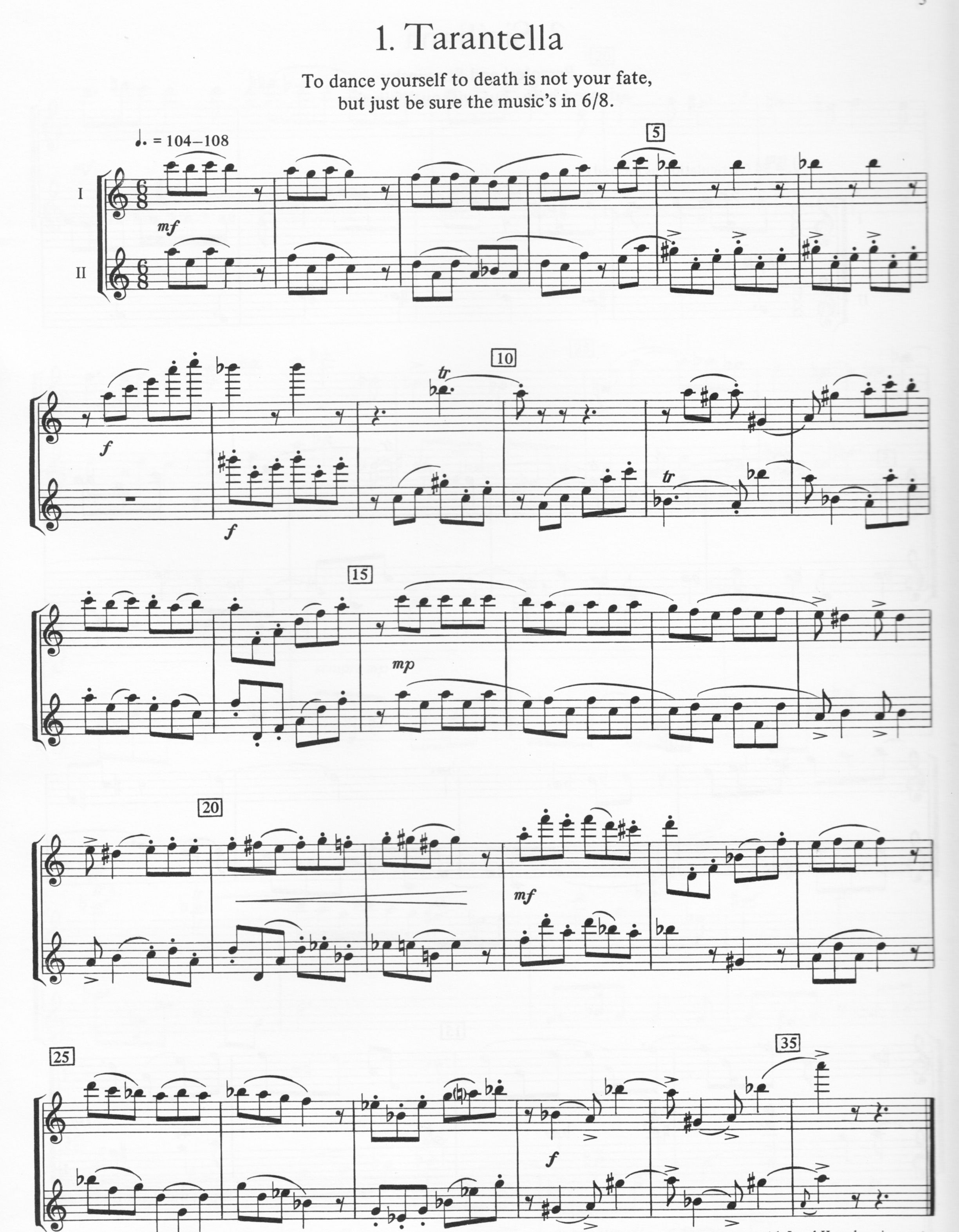
Cheaper by the Dozen
Opus 124 – 1985
“Cheaper by the Dozen” is basically a teaching tool for high-school-age students. Because the movements are brief, the piece can provide a quick study of harmonies and techniques. The movements work easily into programming and they have a light, easily accessible style. All can be played together or a few can be chosen for performance.
Following is a list of the movements with notations of technique:
- Tarantella: Easy 6/8 tempo, range of D1 to C4. Movements move together with parts switching on the repeat. Each has a syncopated rhythm moving together.
- Siciliana: Styled after “Pulcinella Suite” by Stravinsky which was based in part on music by Pergolesi. An introduction to the siciliana rhythm and expressive playing at a soft dynamic level.
- Funghetta: Fugue in easy tempo, 72 to the quarter note with brief 32nd note passages. Straightforward rhythms, clear fugue style. Title not to be confused with fugetta—but instead a play on the Italian word for “mushroom.”
- Colpo di lingua: A humorous piece to play and learn to flutter. Rhythms move together at a slow tempo.
- Toccata: Scale-like passages at a moderate tempo, 96 to the quarter note. Dovetailing passages with first part playing a high C.
- Discorso deliberato: An unbarred conversational piece; introduces concept of accidentals applying only to the notes they proceed. Performers are instructed to play “with emphasis, a kind of courteous argumentativeness.”
- Diagonals: An adaptation from an earlier flute piece, Diagonals is a repeated canon an octave apart.
- A song for JSB: In the style of Johann Sebastian Bach, with a continuo-like accompaniment in the 2nd.
- Vienoisserie: Written in the style of a typical Shubert waltz. An introduction to rubato, played with liberty.
- Swing Row: 12-tone techniques in a jazzy rhythm.
- Spectra: An unmeasured movement with opportunity for expressive, dynamic phrasing. Played “sempre liberamente,” each part has an eerie, freely played solo while being supported with brief comments in the other voice.
- Quintillion: An introduction to the harmony of 5ths moving together rhythmically. Inspired by Bartok’s “Concerto for Orchestra”—Movement 2, Dance of the Couples.
View the full score
Listen to selections from Klaus Roy’s “Cheaper by the Dozen”